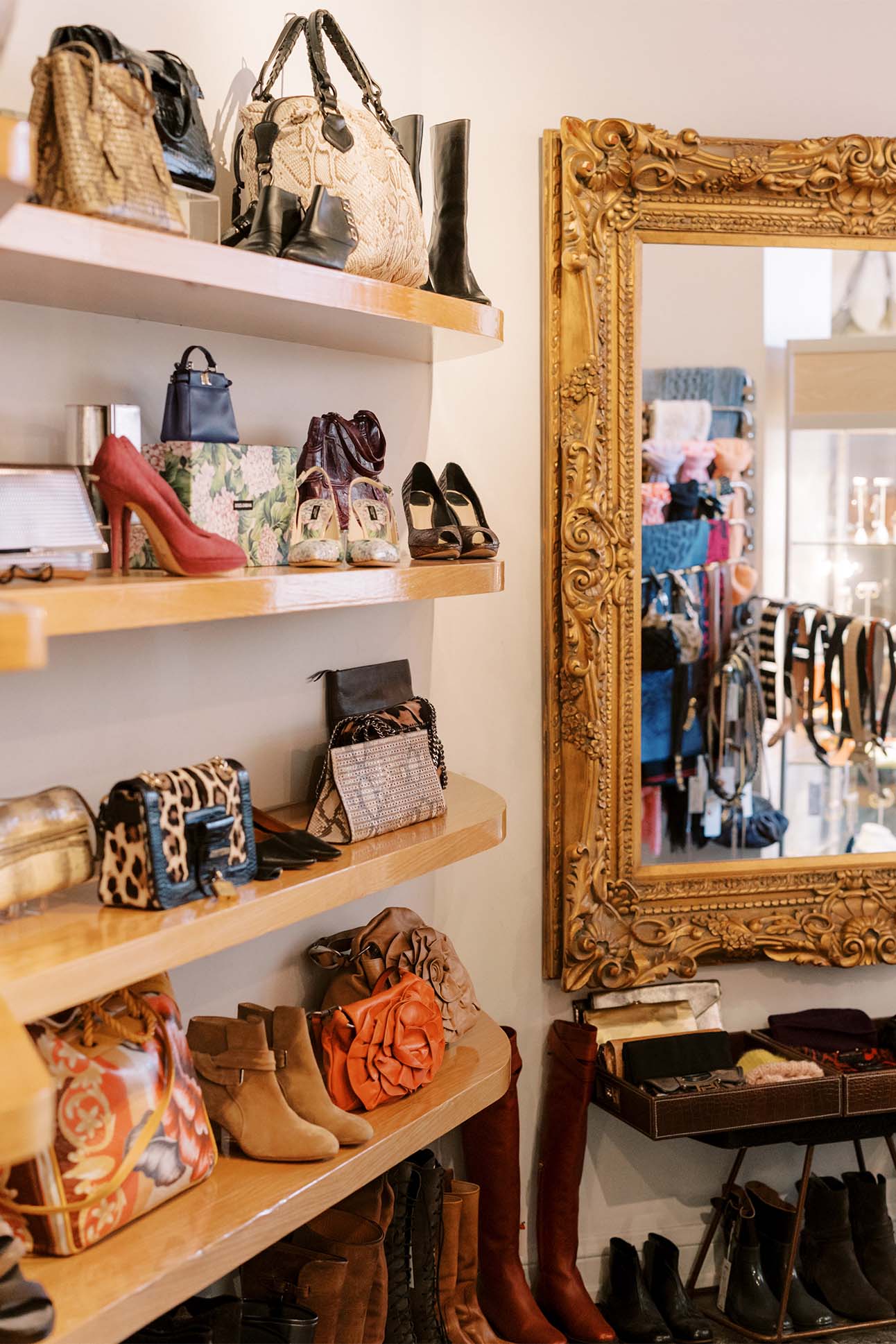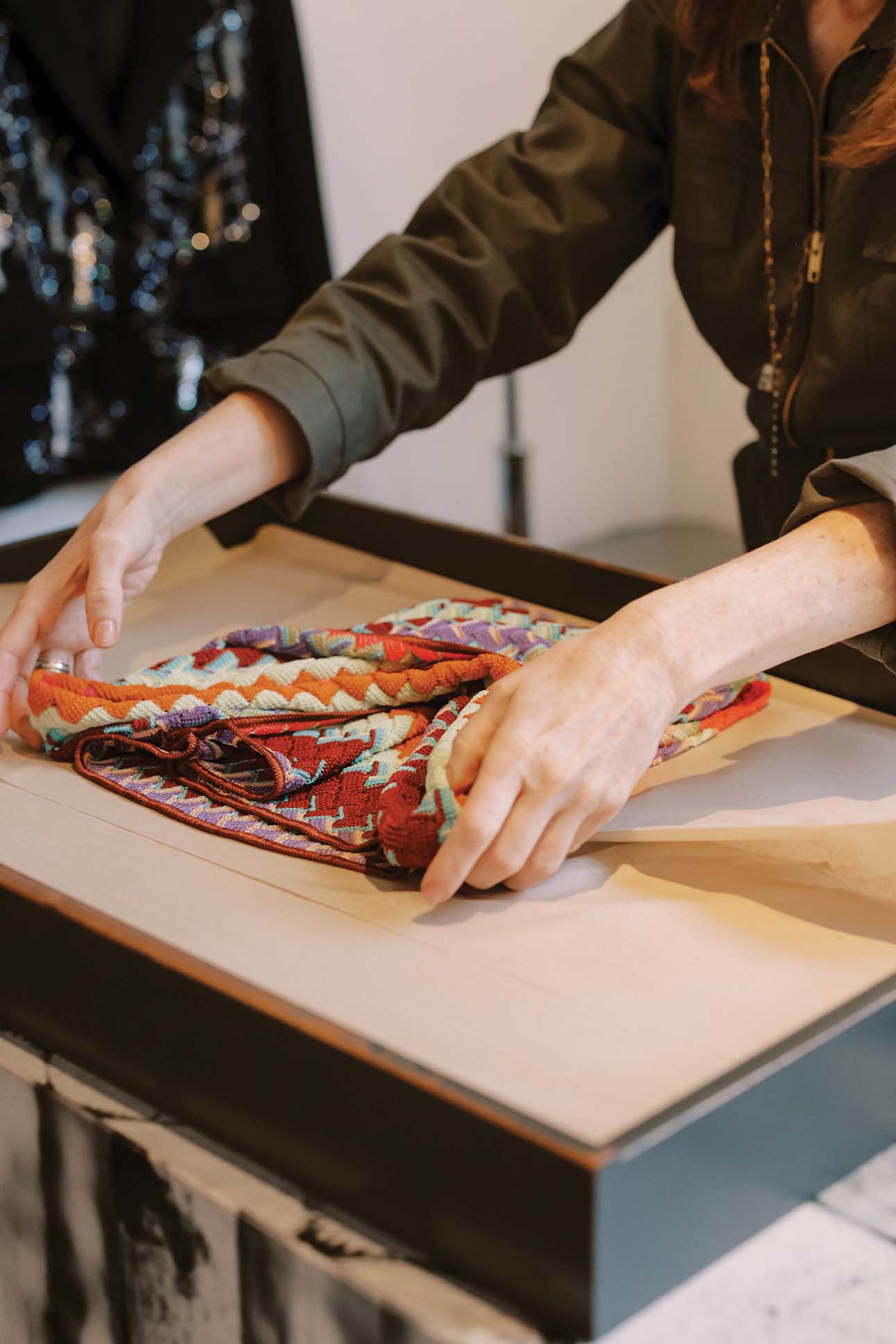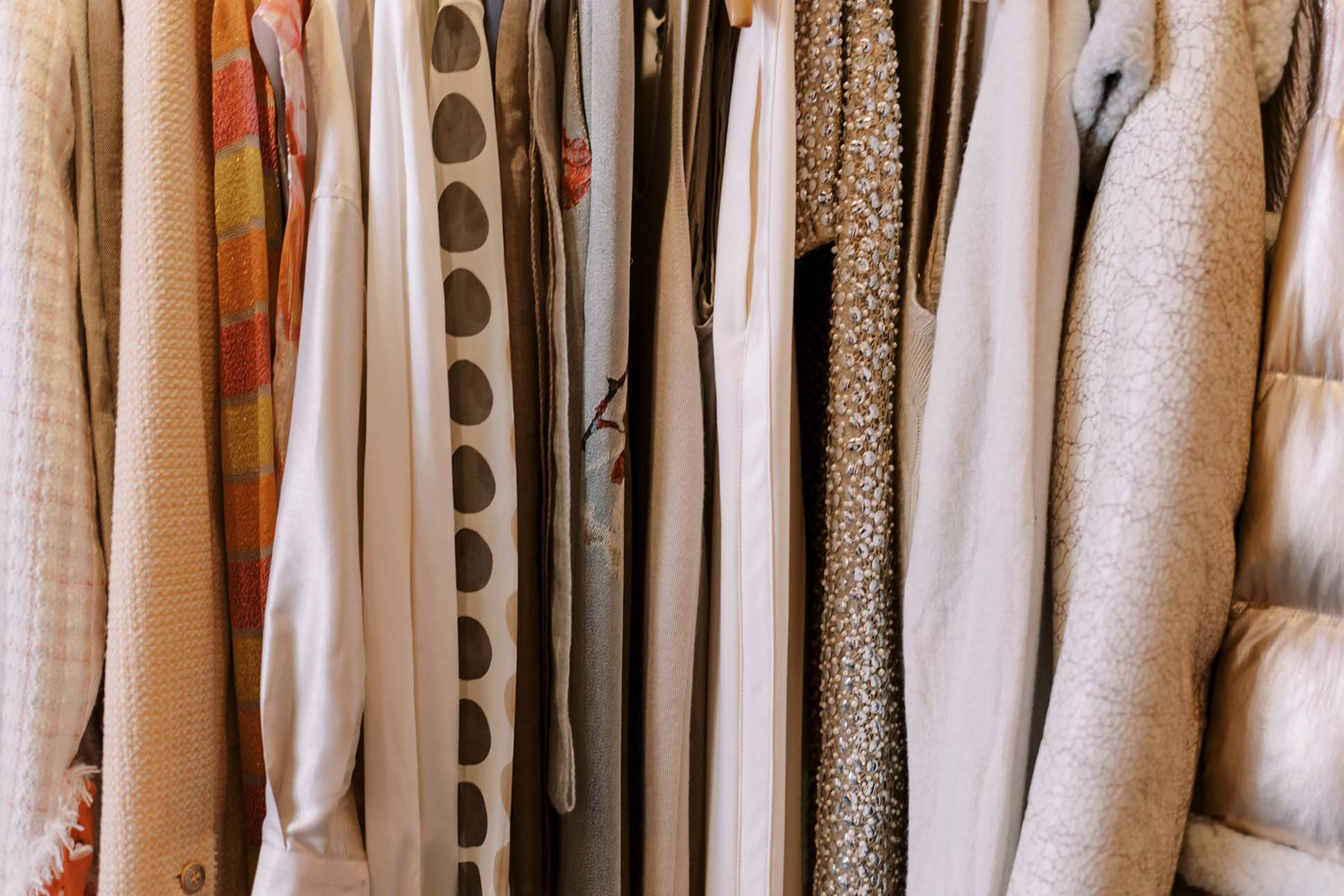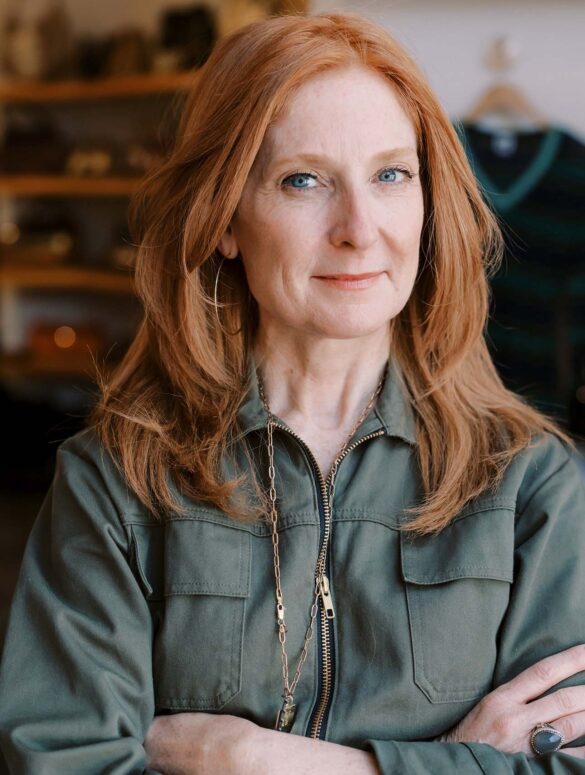As told to Barbara Platts
Images by Megan Wynn
When I was growing up in Kansas, both of my grandmothers taught me an appreciation for clothing. Both were incredible seamstresses. One made her own outfits from Vogue Patterns, which were impeccable, and the other worked at a high-end boutique. I have so much appreciation for the quality and beauty of fine clothing.
I moved to Aspen in the summer of 1998. My college roommates were living in Woody Creek, and they asked if I wanted to come for the summer. I worked at two boutiques in Snowmass Village and realized I had a knack for buying, and I loved organizing and displaying merchandise.
From 2000 to 2002, I worked at P.E. 101 in Aspen. After that, I managed two other high-end boutiques downtown. We would send merchandise from previous seasons to a consignment shop in California. I was also selling some personal items on eBay, the best method for selling used clothing at the time. I knew I wanted my own retail store but didn’t have the capital to fund a traditional women’s boutique, and the idea for a consignment store hit me like a lightning strike. The following week, I wrote the business plan for The Little Bird on an airplane ticket on my way to New York for a buying trip. The Little Bird began modestly, with an investment from a friend and small savings.


About eight months after opening my Aspen store in 2007, I was diagnosed with cancer. I went to MD Anderson Cancer Center in Houston for treatment. I was in Houston for a good chunk of 2008 and decided to open a second store there in August 2011. A year later my son, Emmett, was born. Raising him on my own, we spent years driving back and forth between Texas and Colorado, moving 11 times in four years to keep my business afloat. I opened a third location in Willits Town Center in Basalt last year.
Styles have definitely changed over the years I’ve been in business. That’s the nature of fashion—everything cycles through, and you have to be really aware of what people are wearing. Items that sold well in the early days of the store, like high-end fur by Dennis Basso or J. Mendel, don’t perform as well anymore. I tried selling vintage in the beginning, and there wasn’t much of a demand. Now, vintage is really popular. I think because the luxury market is so flooded, people really like the unique pieces. Brands like Escada, Missoni, and Etro were hard for me to sell, and now they are the first ones going out the door. Because our consigners shop all over the world, we get a lot of items that are one of a kind. I also frequent estate sales, where you can find clothing from decades ago.

People don’t dress up as much as they used to in Aspen. When I first moved here, people wanted to be very showy. I think the day-to-day look is a lot more casual now. We sell a lot of denim, from Mother and Frame to R13 and dSquared2. Ladies will take denim and pair it with a big, chunky sweater—maybe a Valentina sweater—and cute boots in the winter, a fedora or a cowboy hat, and a handbag. The handbag and the shoes are the biggest statement pieces in an outfit. They’re also our bestselling items in the store. For events, we sell a lot of Alaïa dresses. That’s probably our top dress brand. As for skiwear, we sell the fashion brands that are still really functional, like Frauenschuh, Prada, and Bogner.
We work with ladies aged 18 to 80. I’ve watched little girls grow into young women, witnessed young women become new wives and mothers, seen women grieve the loss of loved ones. We’re not here to do a hard sell, which is why I think we have long-term relationships with our customers.
Looking back on the last 15 years, I’m really thankful and proud I’ve made it this far while raising my son as a single parent. I started all of this from scratch, moved here with nothing, and became a pioneer in this industry. I’m also proud of the team of women I’ve worked with. I wanted to create a place women enjoy coming to, both staff and clientele. I like to think that’s shown all of these years.

